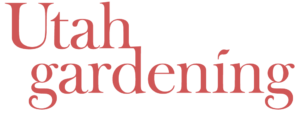How to start your vegetables
Do I put seeds directly into the soil or start indoor? Why are my seeds doing nothing? When should I start it? Here are all the answers for common questions people have.
Direct Sowing
for selected vegetables- Cheap (only need to buy seeds)
- No transplant needed
- Planting time can be tricky
- Low successful rate due to the cold temp or dry soil
- Young seedlings can be easily damaged by hail, snow, frost or pests
- Need to keep the topsoil moist the whole time
- You might forget what you seeded before
Start Indoor
with all the possibilities- Cost is low with initial investment
- Need to harden off your plants before you put them in the garden bed
- Can start anytime indoor (3-4 weeks before the last frost is ideal)
- You control the growing environment
- Protect your seedlings from natural disasters and pests
- You can grow some unique ones if you can find the seeds
- The right tools (growing lights, heating mats, trays, etc) can be costly
- Experience and patience is required
Buying seedlings
for zero hassle- Can be expensive ($5/plant versus $3/a bag of seeds)
- Most are ready to be transplanted (harden off is still recommended)
- Good for people who don’t have time to start seeds themselves
- It can be challenging to get the unique varieties
- No experienced needed

Direct Sowing
If you don’t know what you’re doing, this can be the least successful way to start your vegetables. The timing has to be right – soil is warm enough to allow seeds germinate; the top soil need moisture all the time; seedlings can be easily eaten by pest or destroyed by hail, snow, frost, etc. Some people pop up a dome or cold frame… but you won’t be reading this if you already know how to do so. However, there are plants we recommend you to direct sowing in your garden:
1. Peas: this might be the hardest thing to transplant as you can easily break the stem…
2. Squash, zucchini, pumpkin: the stems are bigger than peas but it might be still challenging for some people. Only sow it when it’s warm enough (lowest temp at night above 50°F.)
3. Anything you want to cover a huge area like spreading clover. Cover with light straw and keep the topsoil moist.
Start Indoor
We start 80% of our vegetables in this way. The first year we didn’t have any equipment: started the seeds in random salad/fruit containers, nursery pots,… some were surprisingly easy and brought some sense of achievement: kale, arugula, squash, etc. We also learned that some of them don’t do anything because they need stratification (ugh!)
The second year, we got a few stuff to scale the production and expedite the process:
1. Heating mat: Highly recommend to get this if you want to start your seeds in winter. Some seeds don’t do anything unless the soil hits a certain temp. Cold damp soil can induce root rots too.
2. Grow light: Light is one of the keys to wake seeds up. The sunlight in winter is just not long enough and you might not start your seeds next to the window. Set your grow light close to your seedlings (but not touching) so they get enough light.
When we fail, we’ll move to the next method – buying seedlings… 🙂


Buying seedlings
If you have a small garden or don’t have the time and patience to start from seeds, buying seedlings from local growers is a great option. For the seeds that need stratification , we usually just get them at nurseries (pic: Lambert Nursery.)
We recommend you check out local growers not just because to support local businesses but also because they’re knowledgeable in growing in Utah climate.
Stratification
Many plants require a period of cold temperatures to break their dormancy cycle- ex: woody plants, herbs (thyme, lavender…), perennials (cone flowers, pentsemon…)
